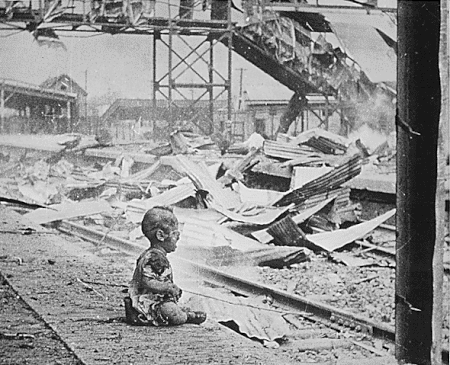LizzieMaine
Bartender
- Messages
- 34,200
- Location
- Where The Tourists Meet The Sea
A good deal of the animosity toward Imperial Japan was not based on racism. News of atrocities against the Chinese did reach the U.S. For some reason, that caused some negative reactions. While America's feelings towards China was more than a little bit tinged with paternalism, there was quite a bit of friendly feelings towards China.
Fundraising campaigns for Chinese relief were widespread in the US in 1937-38, due largely to footage of some of the atrocities committed by the invading Japanese being featured in American newsreels in the fall of 1937. The famous photo of an abandoned baby crying in the ruins of Shanghai was taken by a Hearst Metrotone News photographer and appeared in nearly every newspaper, newsmagazine, and photo publication in the US during September and October of 1937, with its definitive appearance in the October 4, 1937 issue of Life.

Japanese apologists immediately claimed the photo was faked, and there are lingering pockets today who hold to that view, but no evidence of fakery has ever surfaced. Indeed, the original Metrotone News footage showed the baby being rescued and given first aid by a troop of Chinese Boy Scouts. The film footage also showed the dead body of a woman, presumably the mother, lying just out of range of the famous still image shown above.
That footage, and that photo, stirred up a wave of anti-Japan sentiment in the United States that continued with little letup right up until Pearl Harbor. Boycotts of Japanese goods were widespread by 1939. The Americans of the time were well aware of the brutality of Japanese militarism well before December 7, 1941.
Last edited:


